
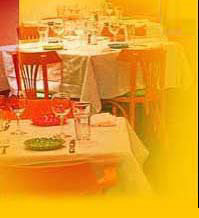

Matheran�s Nature Specialist:Terry de Lima! You may call him Matheran's nature man, author-in-residence, rambler or news-editor, but Terrence de Lima's knowledge of the hill-station, his acquaintances with the old-time dwellers there, sets him apart says Ismat Tahseen In a place called Diwadkar�s Hotel and Lodging, you will When I met Terence de Lima, he was about to begin his afternoon repast and ushered me to join in, asking me to call him Terry. His opening remark itself was a startler. �Malet no more discovered Matheran than Christopher Columbus discovered America,� he said simply, adding, �after all, the Red Indians were already there.� I learn Terry has been a master of several things. A flight purser by profession, he gave up his vocation for something that was close to his heart. It was the field of historical research, which he undertook with a specialization of research of the Indo-British period. This is what he loves to do among other work and it is his research that sees him absorbed even today. Terry also paints and has displayed his serigraphs at the Fine Art Plaza, outside the Jehangir Art Gallery in Bombay. A passion to put pen to paper saw him work as a freelance columnist with the Sunday Observer, where he contributed articles on his pet subject: the heritage culture across India. Articles on cookery and gardening followed under the penname of �Timothy Michaels�. For Society Interiors, Terry wrote on the subject of conservation of architecture and historical monuments. �The magazine was a quarterly back then and they always used my text and photos,� he says with pride. That is true. There is not a single person who does not know the bearded �Terry uncle.� His curiosity has seen him seek out the different aspects of the hill-station: its flora and fauna and people. While the official Town Planners Survey Map of Matheran shows approximately 20 springs, Terry has 50 of them to his credit. �After the 1920�s they have not really assessed the fringes of the forest. I have been through them, discovered little pathways and routes that only the tribals use and I know the forests like the back of my hand.� Today, that is what engages the blithe-footed man like nothing else. He takes people on �rambles�, some of them hourly, some even overnight with foreign tourists who often accompany him to the adivasi villages of Gharbutwadi and Harsha-chi-patti. But all the walks that Terry conducts are off the beaten path, jungle trails that only the woodcutters and few tribals are aware of. The wanderings are coupled with personal discussions, and Terry�s own experiences and insights. Like Terry can go back to 1930, a time when hotels were few and far between. �Only five hotels had telephones then�, he says, �Lord�s Central, Granville Hotel (today Cecil Hotel), Clarendon (Girivihar Hotel), Rugby Hotel, and Olympia (not in existence today).� He also lets you in on what happened when the railway line was built here. �While constructing the line at Jummapatti, they had to dynamite certain parts of the track. Pioneers and Sappers from Pune, handled the dynamiting. While they were doing so, something went awry and four workers lost their lives. The British officer who was in charge was so perturbed by it, that for years he would come up to visit their graves.� Terry also tells the history of how Jummapatti got its name. �There was no village by that name then,� he says. It was just a resting place for coolies, who pulled a �munchil�. �You can call it a sofa on poles. You were lying prone on it and it was pulled by 8-12 people depending on how potya (�paunchy� in Marathi) the person was. Kindly eyes twinkle on a weathered face as he divulges, �There is a place among these hills that has the most beautiful orchids,� adding, �I do not show the spot on my normal rounds with the tourists as the orchid falls into a Schedule I category and the punishment for breaking or stealing it, attracts a jail sentence.� But if you are a keen lover of nature, Terry might just show you the precious species of flowers, you never know! A life member of the Bombay Local History Society, Terry is one of the founder members of the Bird Club and is its co-leader for the Matheran, Bhimshanker and Phansad areas. �Matheran is quite a birdwatchers spot too, due to its large thriving vegetation and conducive climate,� states Terry. A study made by him reveals that the largest bird found here is the Crested Serpent Eagle (56-74 cms), while smallest in size is the Crimson backed Sunbird (just 7-8 cms long). The most beautiful bird, the Asian Parasdise Flycatcher is also seen here. In addition you also have the Red-whiskered Bulbul, White-cheeked Barbet, the Ashy Drongo and the Puff-throated (or spotted Babbler). �The sweetest song bird, called the Shama is one of my favourites. It�s got 18-20 different tunes,� says Terry. Terry gets requests from bird-lovers from as far as New Zealand, USA, UK, Costa Rica, Germany and Canada, who call him in advance to book for the bird-watching sessions. In return he has often been invited to these countries by his friends on many an occasion, but an invitation is not a good enough reason to drag away the hill-station bound rambler from the place he loves. �There must be a purpose to go abroad,� he states. �Can they give me the same treatment and let me in on the same flora and fauna? It is pretty clear then, that Terry has his hands full. In addition to the study on the wild earth, the birds, flowers and trees and nature, he has made a study on tribal medicine and can tell you how nirgundi, a Sanksrit form of the herb nigdi cures headaches and mild stomachaches, while a small antiseptic creeper tied above a wound, effectively removes its septic element. And to add to all this, Terry is also taking up the mantle as the editor of Matheran�s newspaper, New Matheran Jottings, which is being revived since it fell silent here in 1916. In this bi-weekly paper, he hopes to add to his wealth of experiences and his knowledge. That, would be a special �Ramble with Terence� all on its own. PHOTOGRAPHS BY FARZANA CONTRACTOR | |
|
|

Home Page
About the mag
Subscribe
Advertise
Contact Us

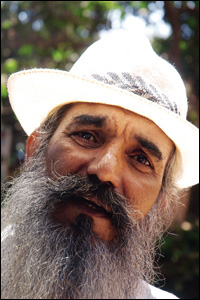
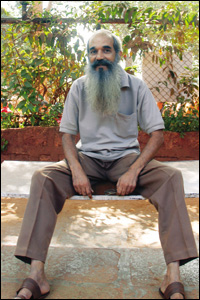 come across the man who is the best and the only true guide to Matheran. I say the only one, because it is solely Terry who deserves this title - with his acute knowledge of Matheran�s history, early tribes, its lovely woods and leafy shortcut paths that go through them, its springs and lookout points, and the jungle wildlife that abounds the hill-station and the forest that surrounds it. All this, he can tell you in his sweet, personal way, that is so unlike what you read in a book or travel brochure.
come across the man who is the best and the only true guide to Matheran. I say the only one, because it is solely Terry who deserves this title - with his acute knowledge of Matheran�s history, early tribes, its lovely woods and leafy shortcut paths that go through them, its springs and lookout points, and the jungle wildlife that abounds the hill-station and the forest that surrounds it. All this, he can tell you in his sweet, personal way, that is so unlike what you read in a book or travel brochure.
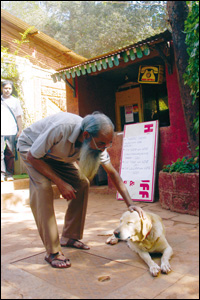 Now that is interesting, because there are books and periodicals that announce that Malet, as the Collector of Thane, discovered the place. �There were already twelve tribes living there at the time,� he elucidates. �They were actually paid to leave and thus were evicted by the British from the land that was theirs.�
Now that is interesting, because there are books and periodicals that announce that Malet, as the Collector of Thane, discovered the place. �There were already twelve tribes living there at the time,� he elucidates. �They were actually paid to leave and thus were evicted by the British from the land that was theirs.�
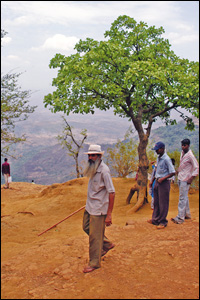 His restlessness to seek out his true calling saw Terry leave the big city in 2000 and head to Matheran to pursue study of nature and heritage. �I was just a big city dude then with minimal knowledge, but a great desire to know more. The townsfolk here readily accepted me and it is they who have fostered my research and work,� admits the man.
His restlessness to seek out his true calling saw Terry leave the big city in 2000 and head to Matheran to pursue study of nature and heritage. �I was just a big city dude then with minimal knowledge, but a great desire to know more. The townsfolk here readily accepted me and it is they who have fostered my research and work,� admits the man.
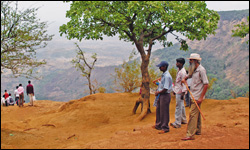 Terry found out that it was Jumma a muslim man, who kept a matka or cold pot of water for these coolies. Thus the station got his name.
Terry found out that it was Jumma a muslim man, who kept a matka or cold pot of water for these coolies. Thus the station got his name.
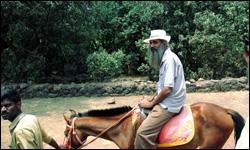 If so, it is worthwhile, otherwise not.�
If so, it is worthwhile, otherwise not.�